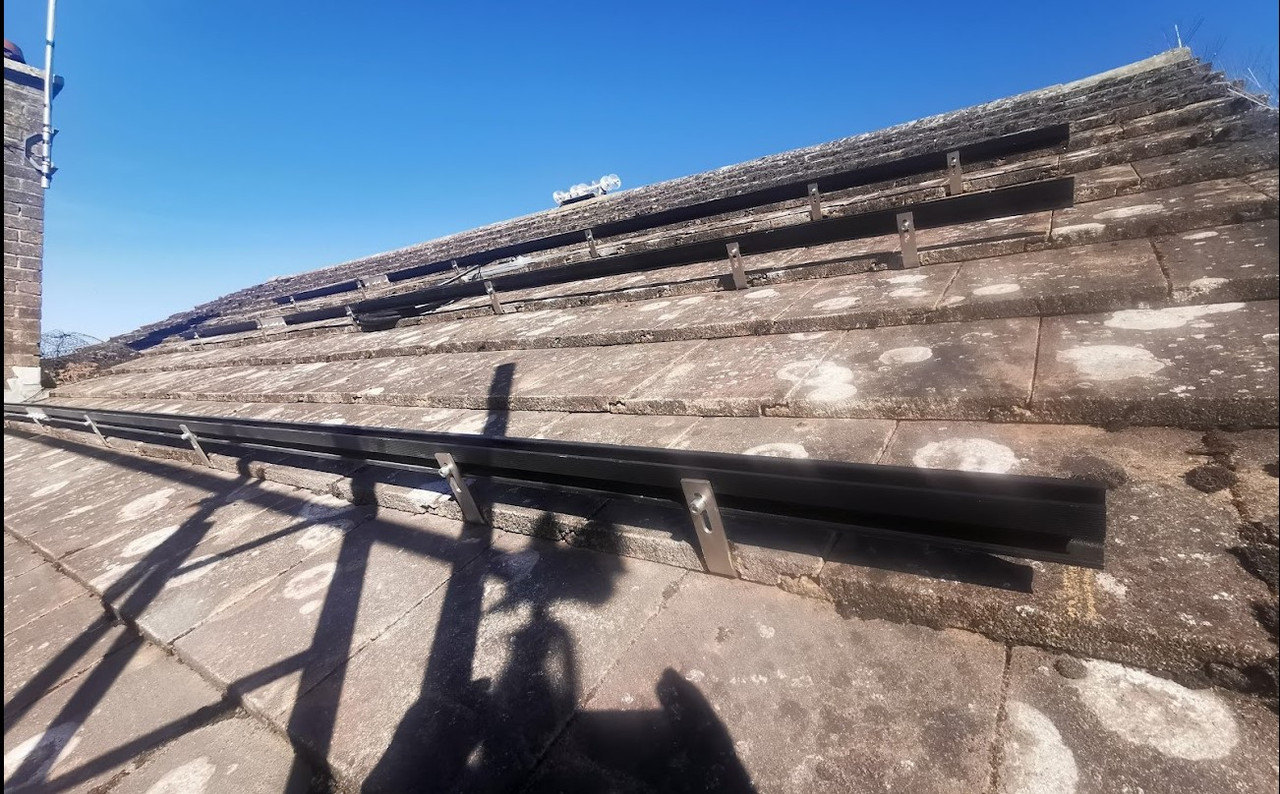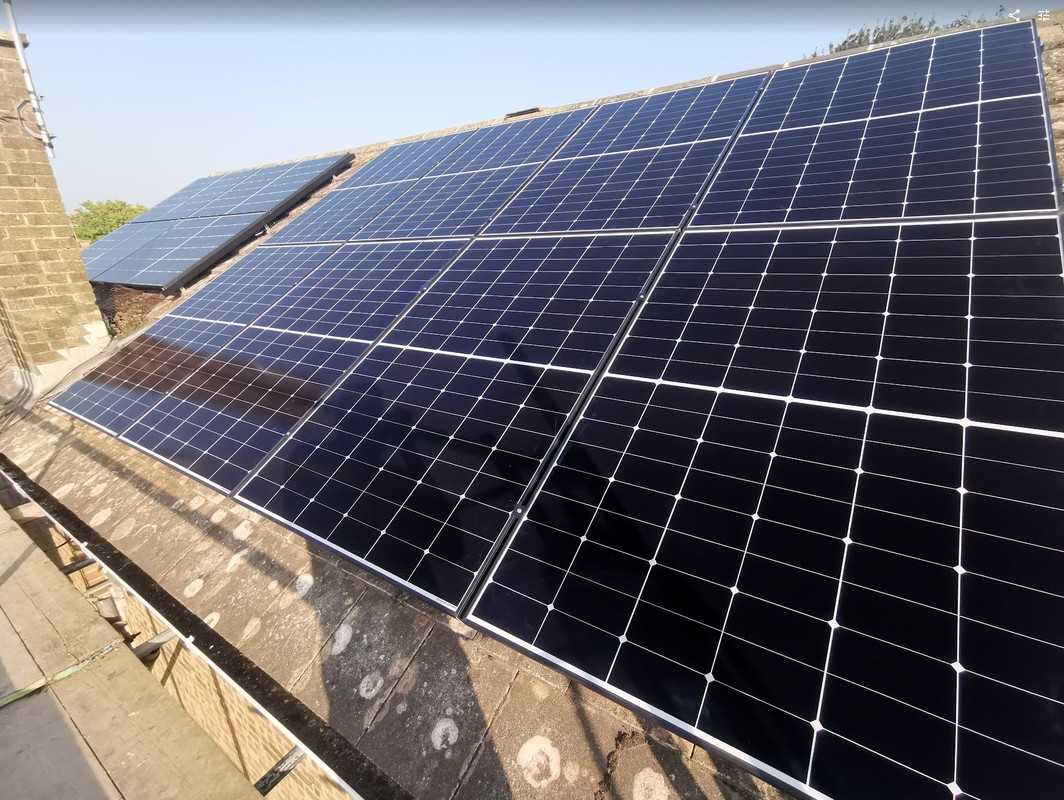I have to ask - is this a big job to fix? I mean - assuming the scaffolding was back up?The brackets which hold the rail to the roof hook are adjustable, as said above they should have adjusted the rail at the time of installing the panels.
Do you have bird netting, doesn't look like it in the pictures, without it you're likely to get pigeon's nesting under the panels, at that will drive you crazy.
PS A new roof doesn't mean it will be flat, as it would be highly unlikely they replaced the roof rafters.
Is it fair to say they likely have not carried out the work with reasonable care and skill?






